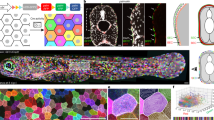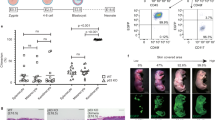Abstract
SKIN has been removed from sheep fœtuses, stored until after the birth of the donor and then replaced as an autograft to a position where its subsequent development could be closely watched. The object of this was to by-pass any systemic factors peculiar to the latter half of gestation which might influence the development of the skin. Also, by having the developing skin on the surface of the post-natal animal, there are many opportunities for experimental work such as altering the rate of expansion and imposing various other conditions.
This is a preview of subscription content, access via your institution
Access options
Subscribe to this journal
Receive 51 print issues and online access
$199.00 per year
only $3.90 per issue
Buy this article
- Purchase on SpringerLink
- Instant access to full article PDF
Prices may be subject to local taxes which are calculated during checkout
Similar content being viewed by others
References
Schinckel, P. G., and Ferguson, K. A., Austral. J. Biol. Sci., 6, 533 (1953).
Billingham, R. E., and Medawar, P. B., J. Exp. Biol., 29, 454 (1952).
Barnard, C. N., Surgery, 41, 805 (1957).
Author information
Authors and Affiliations
Rights and permissions
About this article
Cite this article
HICKMAN, J., RUDALL, K. & WICKHAM, G. Storage of Fœtal Sheep Skin and its Growth as an Autograft on the Lamb. Nature 194, 394–395 (1962). https://doi.org/10.1038/194394a0
Issue date:
DOI: https://doi.org/10.1038/194394a0



